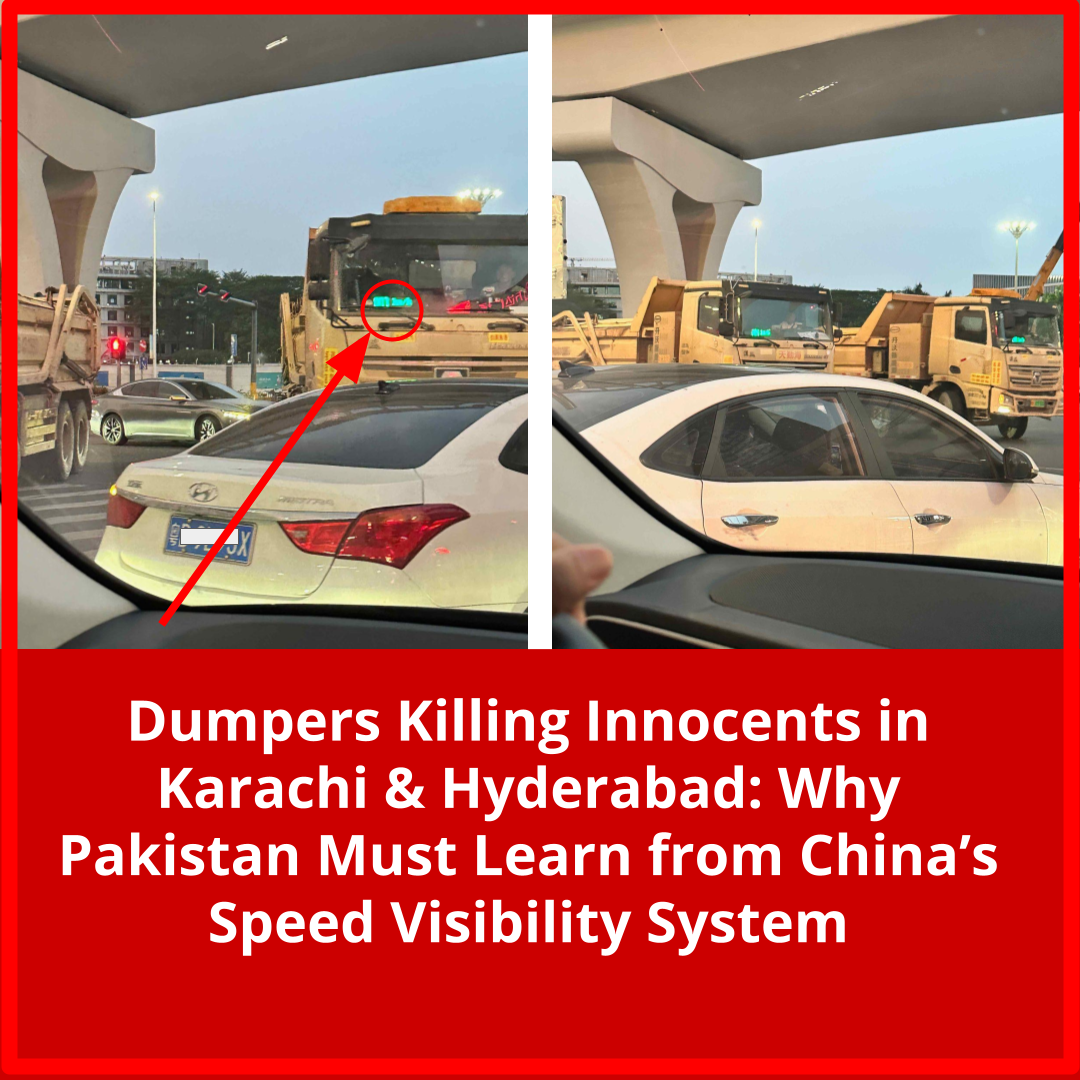
In a rare and much-needed moment of justice, the Supreme Court’s decision to uphold the death sentence of Zahir Jaffer brought a sense of national relief. It demonstrated that when the system is determined, justice can be delivered. But it also raises a deeper, more pressing question: when will the courts take notice of the quiet but continuous carnage unfolding on the streets of Karachi and Hyderabad at the hands of dumper drivers?
What was once considered tragic and accidental has now taken on the shape of something more systemic. Innocent people, including young children, motorcyclists, and pedestrians, are being crushed by these massive construction trucks. The incidents have become so common that they no longer shock. But this normalization is part of the horror. We have begun to accept that lives will be lost simply for living or commuting near these metal beasts.
Behind this deadly pattern lies a disturbing truth. The dumper industry has become a mafia in its own right. These vehicles are operated with complete impunity, bolstered by financial muscle and deep political connections. Legal complaints rarely proceed beyond an FIR. Drivers are bailed out swiftly, and families of victims are intimidated or offered settlements to remain silent. The police, overstretched or compromised, often fail to act, and the state appears to have turned a blind eye.
During a recent visit to China, I observed something that struck me as both simple and revolutionary, something Pakistan could adopt tomorrow if it had the will. In the cities I visited, dumpers and construction vehicles are not only held to strict speed limits, usually no more than 40 kilometers per hour within city zones, but also equipped with a highly visible, front-facing speed display. This bright green digital number, clearly visible through the windshield, shows the real-time speed of the vehicle to anyone nearby: pedestrians, motorists, traffic officers, even surveillance cameras.
This visible speed monitoring serves several purposes. It creates accountability in the public sphere, where any citizen can see if a dumper is breaking the law. It deters reckless driving because the driver knows their actions are constantly visible. In many areas, this display is connected to real-time GPS systems, allowing centralized authorities to track movements and speeds. The entire system is designed around deterrence, transparency, and public safety.
These are not radical ideas. In many developed countries, heavy construction vehicles face layered regulations. In the United Kingdom, for instance, dumpers and haulers are restricted from urban areas during rush hours. In Singapore, such vehicles can only operate on designated roads during specific times. In Canada, speed limiters are mandatory, and violations can result in hefty penalties or even vehicle impoundment.
Pakistan has no such system in place. Here, dumpers speed through busy intersections, drive on the wrong side of the road, and disregard all traffic laws. The result is a trail of shattered lives, grieving families, and a growing sense of helplessness. If the state’s enforcement agencies cannot regulate these operators, it becomes the moral and constitutional responsibility of the courts to intervene.
The judiciary must now do what the executive and legislature have failed to do. It must acknowledge the scale of the crisis and take immediate action. The courts must direct authorities to register and monitor all dumper operations through GPS and enforce real-time speed tracking systems. There must be strict penalties for unauthorized routes, overspeeding, and operating without commercial licenses. A national complaint platform should be created where citizens can report reckless dumpers using photos or videos.
We do not need more grieving mothers lighting candles at vigils. We need regulation, enforcement, and political will. The technology exists. The models exist. China is a living example of how simple enforcement mechanisms can save lives.
The streets of Karachi and Hyderabad are not battlefields, and the people walking on them are not collateral damage. If justice can be done in the Zahir Jaffar case, it can be done for the hundreds who have died under the wheels of lawless dumpers. It is time to act before more lives are lost to this silent war waged by steel and silence.